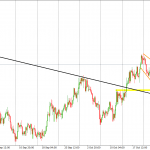As an investor, when contemplating the words in the geopolitical and macro realm, deciphering words and verbiage can be critical to a portfolio’s performance. The geopolitical environment investors are forced to consider this year likely outweighs that which one had to consider in the more recent past or during previous U.S. administrations. The last couple of weeks have found investors rocked back and forth by equity markets and in large part due to the rhetoric coming out of Washington and Bei Jing , China.
Let’s quickly outline the latest charge put forth by the U.S. administration. This latest charge by the White House comes in response to China’s response to the White House’s initial trade tariff proclamation on the Chinese Republic.
“In light of China’s unfair retaliation, I have instructed the USTR to consider whether $100 billion of additional tariffs would be appropriate under section 301 and, if so, to identify the products upon which to impose such tariffs,” Trump said in a statement.
The United States is still prepared to have discussions in further support of our commitment to achieving free, fair, and reciprocal trade and to protect the technology and intellectual property of American companies and American people,” Trump said in a statement.”
On the heels of the latest request from President Trump and when it was all said and done last Friday, the Dow Jones Industrial Average fell 2.3%, while the S&P 500 index lost 2.2% and the Nasdaq-100 Index declined 2.3%. In the midst of this Friday sell-off, investors may have noticed a rather subdued VIX reaction to the move in the S&P 500, which at one point was down as much as 3 percent. Either the VIX wasn’t buying the decline in the S&P 500 or the implied measure of 30-day volatility was “constructing an outcome” still yet to be discovered. With that being said, the Dow is now down 3.1% year-to-date, with dividends reinvested, while the S&P 500 has had a slight positive return and the Nasdaq-100 is up 3.4 percent. The low of the week, last week for the S&P 500, was 2,552.












Leave A Comment